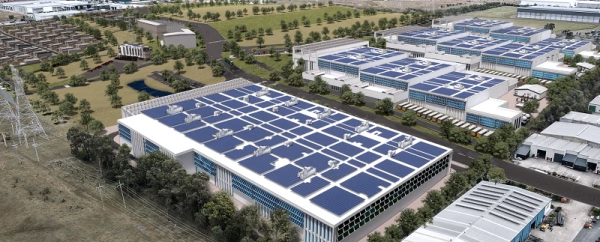As the world becomes increasingly digital, the demand for data centers has surged—but so have the power demand needed to keep them running. From artificial intelligence (AI) to streaming services and cloud computing, data centers now consume enormous amounts of electricity, raising urgent questions about power availability, sustainability, and infrastructure resilience.
1. Growing Demand, Limited Supply
Data centers are energy-hungry facilities with huge power demand. In 2025, it’s estimated that global data centers will consume over 239 terawatt-hours (TWh) of electricity annually—more than many small countries. AI workloads alone, particularly large language models and real-time processing, are responsible for a sharp rise in energy consumption.
However, utility companies are struggling to keep pace. In the U.S., especially in high-growth tech hubs like Northern Virginia and Texas, power grids are stretched thin. The situation is even more challenging in parts of Europe and Africa, where infrastructure development lags behind digital expansion.
2. Grid Congestion and Permitting Delays
One of the biggest challenges is grid congestion. In regions with high data center density, power infrastructure—like substations and transmission lines—is nearing capacity. This leads to delays in connecting new data centers to the grid and limits the scale of expansion.
Lengthy permitting processes and local opposition add another layer of complexity. It can take years to secure approvals for power connections, land use, and environmental compliance.
3. Dirty Power and Sustainability Concerns
Many data centers rely on fossil-fuel-based grids, which contradict efforts to reduce carbon emissions. In places where clean energy isn’t readily available, the carbon footprint of data processing becomes a public concern.
Communities and regulators are increasingly demanding that tech companies:
- Transition to renewable energy
- Report on energy usage and emissions
- Minimize impact on local water and air quality
Some companies are taking the lead by investing in on-site solar, wind, and battery storage. Others are exploring small modular nuclear reactors (SMRs) and natural gas as backup energy sources.
In Doña Ana County, New Mexico, a proposed $165 billion hyperscale artificial intelligence data center campus known as Project Jupiter intends to use a closed-loop water recycling system to minimize water usage and have on-site power generation, battery storage, and a microgrid to supply its own electricity.
In Minnesota Amazon recenty cancelled plans for a Data center Project in Becker. Part of the reason is the fact that the the company lost a battle before the Minnesota Public Utilities Commission over installing 250 diesel backup generators to power the center. In addition to this legislative changes in Minnesota had voted to roll back tax incentives previously granted to data center developments.
The push for use of clean energy has also become a game changer. Recently google signed the largest hydroelectric power purchase agreement amounting to US$3billion. AWS has also reached power purchase agreements with renewable energy producers to support their cloud infrastructure.

AirTrunk’s in Western Sydney Australia is going against the grain and will leverage the use of diesel generators. It will also have battery storage units to provide power. The AirTrunk data center campus in Australia is expected to host various amenities to ensure its operations. It includes 936 cooling units and 852 diesel back-up generators. Documents also suggest the site would feature 7,488 cabinets for lithium-ion battery storage. Furthermore, at least one on-site substation is planned and the potential for three others.
All this signals a change in attitude towards power hungry data centers in spite of the potential billions of dollars in investment.
4. The Rise of Private Power Generation
To overcome these challenges, some hyperscale data center operators are moving toward private power generation. This includes:
- Building microgrids
- Partnering with renewable energy providers
- Securing long-term Power Purchase Agreements (PPAs)
By decoupling from strained public grids, companies gain more control over energy costs, reliability, and carbon footprint.
For instance Google is investing in clean energy for its plants and has partnered wth energyRe in which the South Carolina deal involves the investment in and purchase of Renewable Energy Credits (RECs) from over 600 megawatts (MW) of new solar and solar-plus-storage projects being developed in the state. In addition in Taiwan Google has entered in to a power purchase agreement in its drive toards net-zero. In Virginia Google’s $9 billion Virginia expansion announced in August 2025 raises concerns over water and power use. The company has agreed to cap water consumption in Chesterfield, funding new infrastructure if usage exceeds limits, while deploying advanced cooling to reduce demand. On power, it will connect to Dominion Energy’s expanding grid and pursue efficiency and renewable energy to manage the massive electricity needs.
Microsoft, in May 2023, signed what it called the world’s first nuclear fusion power purchase agreement (PPA). Under the deal, the company will offtake up to 50 MW of capacity from the Orion Nuclear Fusion Power Plant currently under development in Washington. Entergy Louisiana on the other hand wants to install three natural gas-powered turbine generators that would provide 2,250 megawatts of electricity for Meta’s facility.
5. Innovation in Energy Efficiency
Beyond sourcing power, efficiency is a critical piece of the puzzle. Innovations such as:
-
- Liquid cooling systems
- High-density racks using 400V direct current (DC)
- AI-optimized energy management systems.
are helping reduce power usage effectiveness (PUE) ratios and shrink overall energy demand per server.
The need for adequate cooling has also put constraints on efficiency for instance a report released by the City of Racine indicates Microsoft’s Mount Pleasant Data Center will require 8.4million gallons a day putting pressure on local water resources.
Conclusion
Power challenges are no longer just a technical issue for data centers—they are a strategic business concern with environmental, regulatory, and societal implications. As digital infrastructure continues to expand, the pressure is on to build smarter, cleaner, and more energy-resilient data centers. The winners in this race will be those who can combine growth with sustainability and long-term energy planning.

